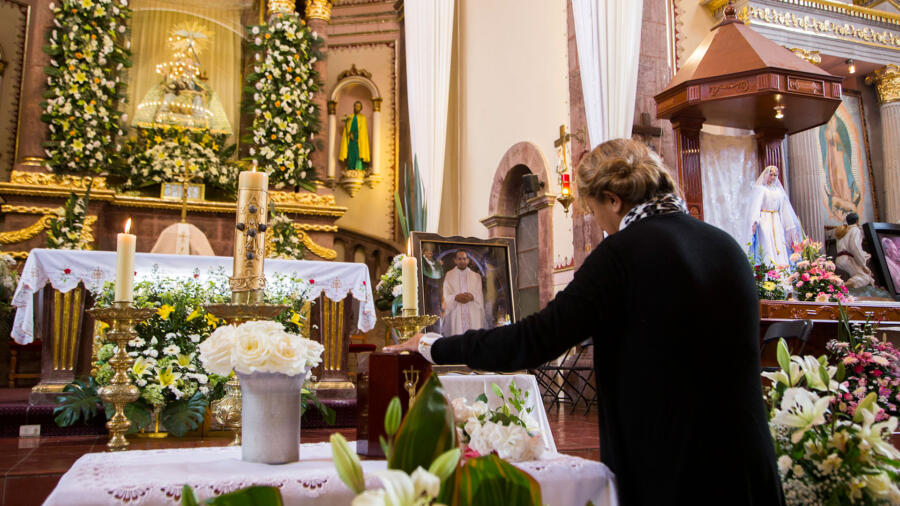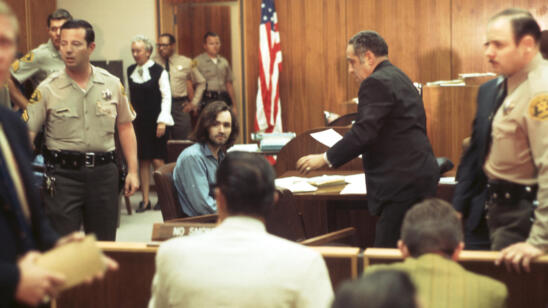Mexico has the grim distinction of being the most dangerous country in the world for Catholic priests.
A total of 47 pastoral workers—which includes priests, nuns, seminarians, brothers, lay workers and others within the Catholic church—have been killed in Mexico since 2005, according to data collected by Fides News Agency, the information service of the Pontifical Mission Societies. That’s an average of 2.9 killings each year.
The second-deadliest country for pastoral workers is Colombia, with 44 killed since 2005, followed by Brazil, with 28, and Nigeria, with 25.
Father Sergio Omar Sotelo Aguilar, director of Mexico’s Catholic Multimedia Center, which tracks violence against Catholic clergy and churches in the country, tells A&E True Crime that priests in Mexico are targeted because they work in direct opposition to the interests of organized crime, which in many instances has infiltrated or overrun law enforcement throughout the country. In addition, criminals can hold the mistaken belief that local priests and churches hold riches they don’t actually have, he says.
Sotelo Aguilar directed a 2019 documentary titled Tragedia y Crisol del Sacerdocio en México (Tragedy and Crucible of the Priesthood in Mexico) about the violence—which often includes abduction, torture and murder—against priests and other pastoral workers, as well as the desecration of churches across the country from 1990 to 2018. A Spanish-language book version was published in April 2021.
“Priests are ‘social stabilizers’ within their parishes,” Sotelo Aguilar says. “When you murder a priest, you’re not just murdering a person. You’re also pummeling an institution that stabilizes an entire community.”
In addition to spiritual services, priests also work to promote education, health, human rights and the protection of migrants, women and children. “All of these things are in direct opposition to organized crime, which we know is not just drug trafficking, but has also branched out into human trafficking, and the trafficking of immigrants, weapons and organs,” says Sotelo Aguilar. “When drug traffickers see themselves threatened by something, they want to eliminate it, they want to eradicate it. That’s the reason for the harassment and violence against members of the church.”
The situation in Mexico can be complex at times, with some priests resigning themselves or cozying up to the rich and powerful—something Pope Francis spoke against during a visit in 2016 with a call for priests to fight against violence and corruption.
Pastoral Violence, By the Numbers
The Catholic church’s bloodiest year in Mexico was 2018, when seven priests were murdered, according to Fides. They included, Father Ivan Jaimes and Father Germain Muñiz Garcia, killed in a street ambush; Father Juan Miguel Contreras García, slain after he celebrated Mass; Father Rubén Alcántara Diaz was stabbed to death; and Father Ícmar Arturo Orta, found two days after he disappeared, with his hands and feet bound and his body bearing signs of violence. The body of Father Miguel Gerardo Flores Hernandez was found on vacant land a week after he disappeared. Eighty-three-year-old Father Moisés Fabila Reyes was found dead despite his family reportedly having paid a ransom of over $100,000, Crux Now reported.
The brutal toll came in the midst of surging violence across the country.
The number of priests killed returned to average levels in 2019 with three such deaths. No priests were killed in 2020, most likely due to the effects of the COVID-19 pandemic with fewer church services and more people quarantining, Sotelo Aguilar says.
Sotelo Aguilar says it’s important to look at the political context within the country.
In the six-year term of President Felipe Calderón from 2006 to 2012, 17 priests were killed, along with three religious persons, four lay people and one Catholic reporter, Sotelo Aguilar says. Under President Enrique Peña Nieto from 2012 to 2018, 26 priests were killed and two more disappeared and are still missing, he says. “The numbers were terrible.”
Under President Andrés Manuel López Obrador, who took office December 1, 2018, things have improved slightly, according to Sotelo Aguilar, but the situation is still precarious.
For context, Mexico’s overall murder rate—while always high—declined by about a half percentage point each in 2019 and 2020, with the rate last year reportedly at 27 killings per 100,000 residents, according to the Associated Press.
By comparison, the U.S. murder rate rose from 5 per 100,000 residents in 2019 to an estimated 6.2 per 100,000 residents last year, The New York Times reported. The FBI has yet to release final figures.
So far in 2021, one priest was killed in Mexico: 63-year-old Gumersindo Cortés, whose body was found with signs of violence next to his truck in March. But harassment, threat and extortion of priests and other pastoral workers continue to be widespread, Sotelo Aguilar says.
There have been 884 such cases in the last 12 months, and about 26 churches per week desecrated or stripped of sacred art each week, he says. Mexico—which after Brazil is the country with the highest number of Catholics—leads the world in sacred art theft, which began in the 1990s to finance drug trafficking, California Catholic Daily reported this year.
Indeed, the killings of pastoral workers worldwide are only “the tip of the iceberg,” according to Fides. “It is almost impossible to compile a complete list of the bishops, priests, nuns, pastoral workers, simple Catholics, humanitarian workers or members of international organizations, who are attacked, beaten, robbed and threatened,” the agency wrote in 2018.
The Impact of Corruption
Another contributing factor in Mexico is that 80 percent of cases involving violence against priests remain unsolved, according to a report by the Catholic Multimedia Center. The reason for the dismal clearance rate is that many law enforcement agencies across the country “have been infiltrated by organized crime or simply dominated by it,” and tend to put investigations involving religious victims to the back of the line, he says.
An especially traumatic event for the country was the 1993 murder of Cardinal Juan Jesús Posadas Ocampo, the highest-ranking member of the Catholic Church killed in Mexico, a crime in which many questions remain unanswered.
Posada Ocampo, an outspoken critic of drug cartels, was killed along with six others in a shootout outside the Guadalajara International Airport. The government initially claimed this was a case of mistaken identity at the hands of drug cartels, but later gave contradictory accounts. Many believe the government was involved in the killing, including Posadas Ocampo’s successor Cardinal Juan Sandoval Íñiguez, who in 2007 told the Catholic News Agency that “the politicians who were involved in drug trafficking ordered the killings.”
As for whether things will change, Sotelo Aguilar says he holds out hope.
“[Catholic priests] are prophets of the good word… We are always looking for the hope that [the stories of these murders] will come to light and that Mexico will have a much better situation. This country has great potential and is full of hardworking, intelligent people who love their families.”
Related Features:
Why Mexican Drug Cartels Leave ‘Calling Cards’ With Their Murder Victims
Why Are So Many Indigenous Women in Alaska Coming Up Missing and Murdered?
Why the Media Ignored the Disappearance and Murder of LaToyia Figueroa


